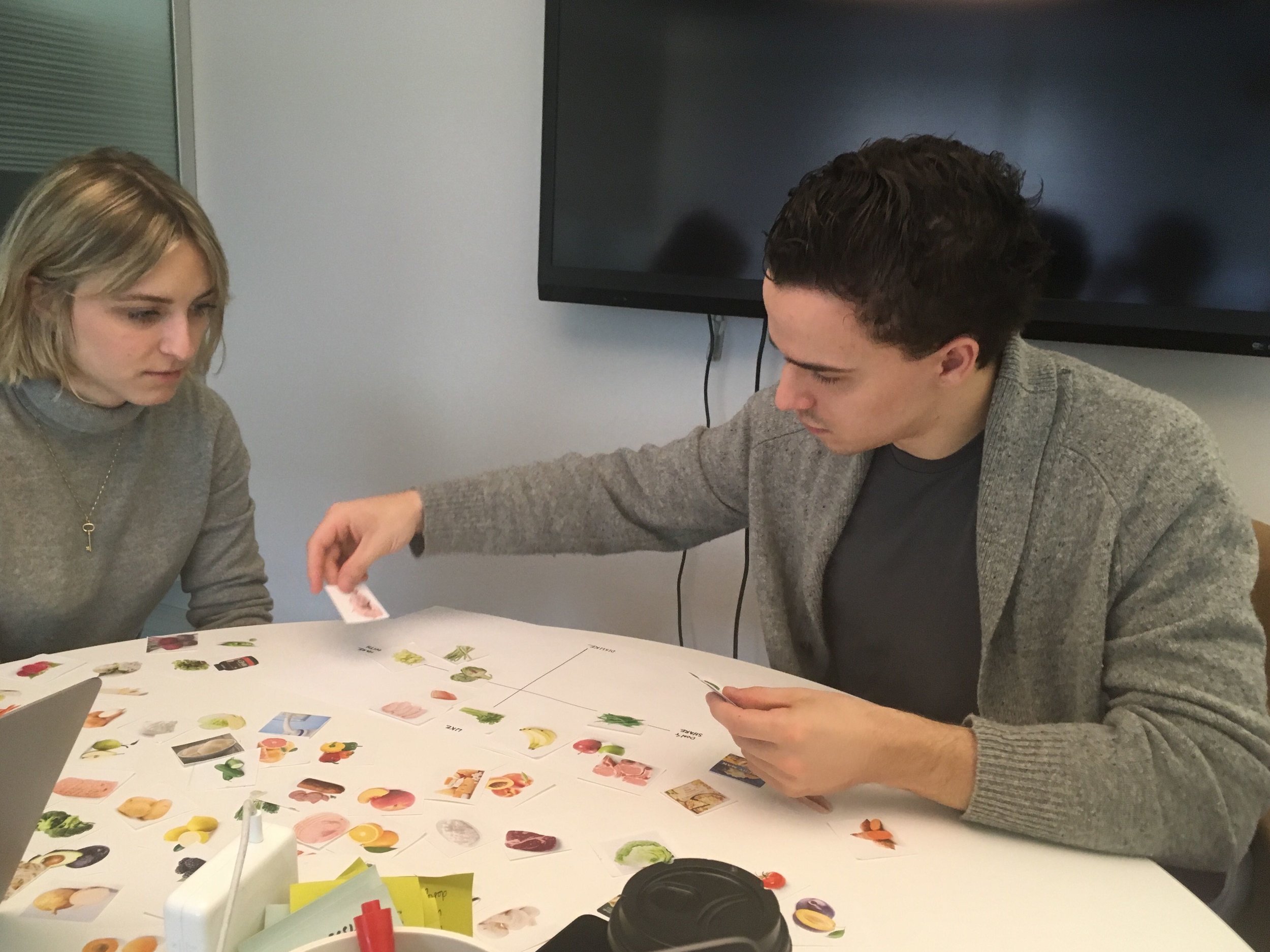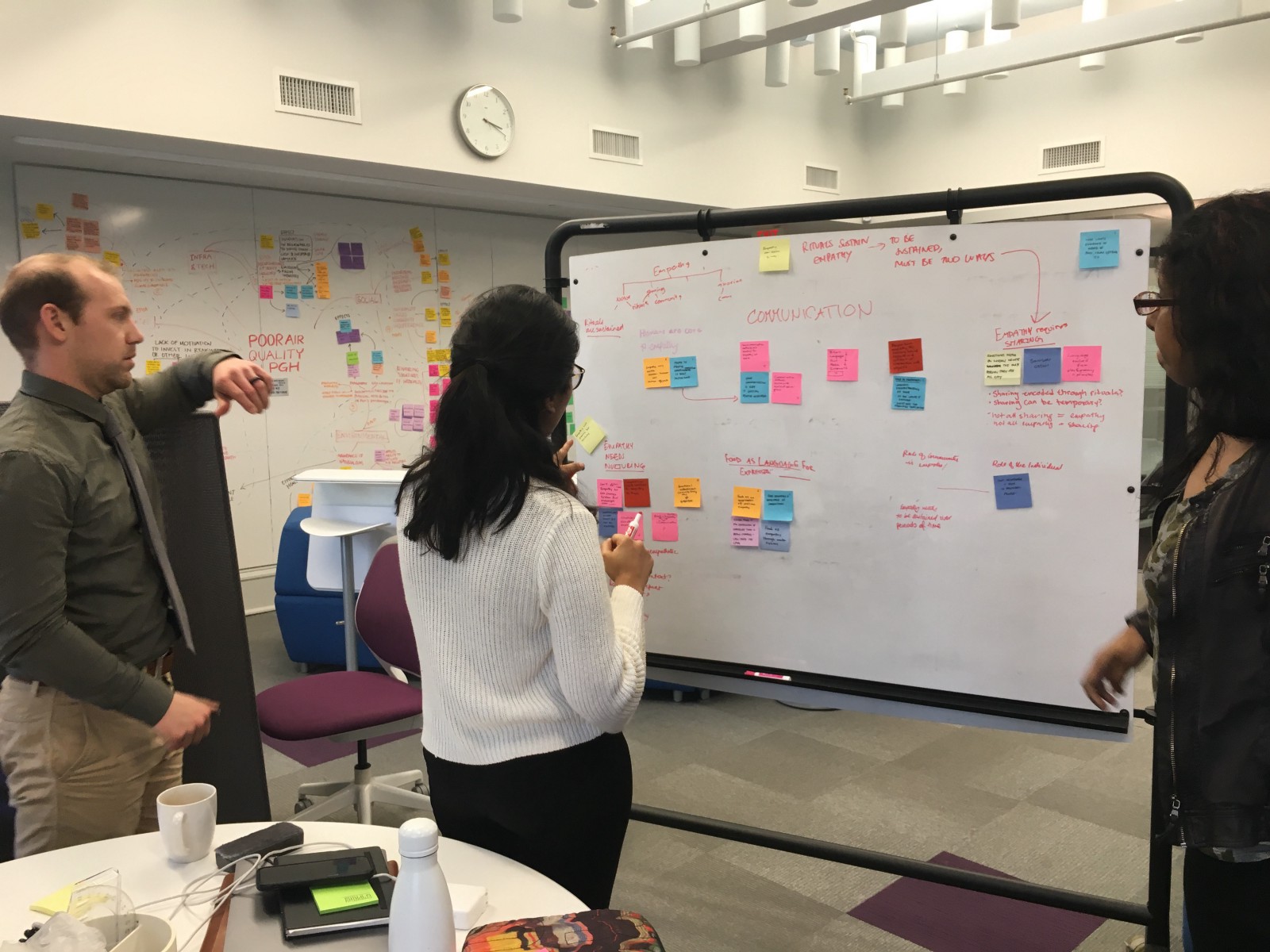SYSTEMS THINKING| HUMAN CENTERED DESIGN RESEARCH | SERVICE DESIGN
A research study into aging and elderly isolation to understand it on a systems and personal scale through transition design and design research methodologies. From the synthesis of the research, this project focusses on creating opportunities for intergenerational empathy as a way to address the problem.
Team: Corine Britto, Ema Kardavic, Josh LeFevre
Role: Research, Synthesis, Concept Development, Design
Tools: Exploratory, Generative and Evaluative Research Methods, Transition Design Methodologies
Duration: 15 weeks (ongoing) | Carnegie Mellon University, School of Design
The challenge:
As a part of the Microsoft Design Expo 2019 brief we were tasked to design a product, service, or solution that enables/creates empathy across a large and diverse demographic. This had to demonstrate a creation that is innovative, maps back to a clear need, and leverages current technologies (or those that are feasible in the near-term).
Applying a transition design lens:
To understand the emerging Transition Design approach for addressing complex, wicked problems and seeding/catalyzing systems-level change and cover the following topics: 1a)Mapping Wicked Problems; 1b) Mapping Stakeholder Relations; 2) Multi-Level Perspective Mapping (MLP); 3) Developing Future Visions; 4)The Spatio-Temporal Matrix; 5) Designing Interventions.
Project Timeline:
The Context :
The social isolation of an individual is the psychological and/or physical distancing from one’s own networks and needed relationships with other people. It is a loss of place within a group (Biordi & Nicholson, 2009).
Isolation in adults over the age of 50 occurs at the individual, community and societal level which is very characteristic of a wicked problem. Life events, changes in health and contextual factors are some contributing aspects that can trigger isolation for the elderly individual.
This project looks at facets through which elderly isolation can be addressed with a focus on creating intergenerational empathy.
Mapping a Systemic Problem:
Understanding the problem of elderly isolation as a systemic one, requires us to understand its interconnection. We started by mapping out the wicked problem visually and categorizing it into social issues, environmental issues, economic issues, political issues and lastly infrastructural/ technology issues. We placed these on our project canvas and began to see the connections between each category and identified roots from consequences.
Key Insights from wicked problem mapping:
01. Changes in family structures increase both physical and social distances:
With a growing trend of nuclear and single families along with increased migration, elder family members find themselves isolated due to their loss of place and influence. In addition, distances between different generations are growing with a respect to the perceived role of the elders in the family, this may be a leading factor in the intergenerational gaps that are seen today.
04. Designers and urban designers need to design for a more inclusive society:
A large part of the problem is the mindset of designing for the living and not for the aging. This ethos systematically alienates the elderly from a vast majority of products and infrastructures.
02. Deteriorating health and elderly isolation form a cause and effect relationship:
Understanding isolation as a public health crisis is key to expanding our sense of it. While poor and diminishing health may cause barriers to interactions and cause elderly isolation; conversely increased social isolation also impacts the mental and physical health of the elderly, thus forming a positive feedback loop between the two.
03. Lack of research and education:
Education transcends most problems. In the case of the elderly isolation too, we found the lack of literacy around subjects that that concern long-term financial literacy, and literacy on geriatrics that cause further distancing. We also found a dearth of research on the elderly isolation problems, which speaks of growing need to not just recognize this as an impending crisis but to formulate ways to tackle the situation soon.
05. The built and natural environment poses structural problems:
Besides the social implications of the elderly problem, the built environment and infrastructures pose challenges that limit access to the elderly and disabled. These problems manifest themselves in tangible, heavy, expensive infrastructures, changes to which won’t be readily agreed upon or imaginable. It is important that cities provide
EXPLORATORY QUESTION:
How might we create new environments of interactions to nurture empathy between young professionals (20-30) and older adults (65-75) experiencing significant life transitions in order to build more inclusive and resilient communities?
Exploratory Research
““Outside of my immediate family, I’m not even sure where I’d go to talk to someone old ””
““Since we are all aging, we need to shift the view of designing for ‘them’ to designing for ‘us’. When we design for aging everyone wins””
““Meal time at the fraternity added community and consistency to my life””
““Authentic empathy necessitates a deep connection between individuals; at scale empathy becomes a marketing message. That’s the challenge. ”
”
Exploratory Research Insights:
Empathy
Empathy cannot be forced but rather, needs to be nurtured through an ecosystem of human interactions
New communication channels are required to facilitate empathy at scale
Aging
Ageism stereotypes are bi-directional and preclude empathy
We are not as different as is perceived
The human need for meaningful connection is lacking for all generations
Community
Changes in family structures increase reliance on community
Interactions between multi-generational groups are typically limited to families or within institutions
Routines and institutions together influence intergenerational connection
Food
Food facilitates community and connection
Family is the building block for understanding food
Design Principles
01.
Create an ecosystem for empathy
To occur routinely among all generations, whether old or young
04.
Leverage intergenerational commonalities
To foster quality social interactions
02.
Foster intergenerational support
To leverage points of transitions to create sustained habitual change
05.
Utilize food rituals as connective conduits
To share knowledge and stories
03.
Build a sense of community
For connection and acknowledgement of universal needs
06.
Being mindful of individual needs and motivations
For effective change in routines and perceptions
Generative Phase
Understanding elderly routines at the senior centre
We made a trip to a senior centre in the neighborhood to understand the routines, needs and challenges of the older adults, in an environment that is comfortable for them. We pre-tested some of our activities with the target age group and conducted some more interviews while there.
Generative Research Workshop
We conducted a workshop where we invited the two different generations to reflect on their needs and their perceptions of the other and work together with a goal to test how this intergenerational communication plays out. We managed to bring together a diverse group of four seniors and four millenials for this activity.
01. Self perception and persona building
Use the materials in front of you to describe yourself so we can get to know you better.
02.Identifying needs and challenges
Using the prompts and reflecting on your own life, identify the needs and challenges for yourself and then those of another generation,
03. Identifying common needs and challenges
With your partner from the other generation, first compare the perceptions you both have of one another and then mark your commonalities.
04. Constructing a shared future
Using the make tools provided, build a space, service or product that aligns with one of your common needs or challenges. Building on that both physically and psychologically, we asked them design a product service that meets their needs in a shared future.































